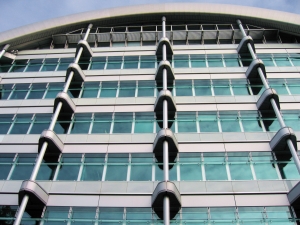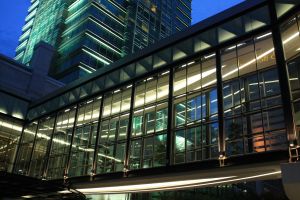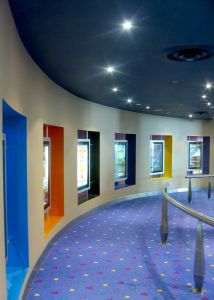There are a variety of terms that may be written into a commercial lease that benefit either the lessor, lessee, or, in certain circumstances, both. As the provisions contained in a commercial lease can drastically impact the rights and obligations of the parties, it is of particular importance that each individual effectively negotiate his position so as to obtain the most favorable terms possible. Although it is always advisable to consult with an experienced commercial lease lawyer, the following are a few tips to keep in mind throughout the negotiation process. It is not by any means a comprehensive list of issues, but these tips address some of the major concerns. Preliminarily, keep in mind the parties’ relative bargaining positions. In most cases, landlords have the upper hand. Understanding relative bargaining power helps a business decide where and when to use its bargaining chips.
 Decide What Terms Are Important to Your Business
Decide What Terms Are Important to Your Business
The most obvious terms that need to be considered when negotiating a commercial lease are the length of the agreement and the amount of rent to be paid. It is generally advisable not to commit to a lease more than two to five years in duration, with an option (or options) to renew the agreement at the time of expiration. The length of the lease is significant because businesses need flexibility to move and expand as they grow. Entering into a longer lease may leave a business that has outgrown its current space with little recourse.
The amount of rent is probably the most important factor during the negotiation process. A fundamental understanding of what the business can afford in the short and long term is critical. It’s important to factor in the annual rental increases and any common area maintenance expenses (CAM expenses) when making this determination. A well drafted business plan with realistic projections is the best way to ensure success.
In addition to these key terms, determine any other specific issues that are of concern to the business. Try and consider all eventualities. Every business has different needs resulting in different priorities. For instance, a yoga school may require more parking spaces than other tenants in a particular strip mall. If this is the case, be sure to address the issue of parking in negotiations with the landlord.
Determine Which Party Is Responsible For Maintaining And Repairing The Premises
Unlike residential leases, where the responsibility of conducting repairs and maintenance generally falls on the landlord, commercial leases typically allocate this burden to one party or the other. Most commercial leases require the lessee be accountable for all upkeep of the premises, while others specify that the tenant is only responsible for certain items such as utilities, plumbing and air conditioning. In the triple net lease (the most common type of commercial lease especially in the retail context), all CAM expenses are passed on to the tenants. It’s important to have a clear understanding of which expenses will be allocated to the landlord and which expenses will be allocated to the tenant. There are often CAM exclusions specified in the lease. During lease negotiations consider whether additional CAM exclusions are worth negotiating for. See “Understanding Your Lease – Common Area Expenses“.
Be Clear On The Terms Of Default
No one enters into a lease intending on defaulting, however, the reality is that many companies fail and are unable to satisfy their obligations. Accordingly, it is imperative that the terms of the lease be clear as to what constitutes default and as to the remedies available to the non-breaching party. If the tenant falls behind on rent, how long before the landlord can initiate eviction proceedings? If the tenant fails to maintain required insurance, what are the landlord’s options? Will the tenant have time to cure the problem before eviction proceedings are instituted? Are there incurable breaches in the lease? Are there limitations on the tenant’s remedies for landlord breaches? It is common for commercial leases to restrict tenant’s remedies to actual damages (no punitive damages or lost profits) and to prohibit termination of the lease without legal action. Negotiating the terms of default and available remedies up front provides both landlord and tenant with clear dividing lines which in the long run helps avoid future head-ache and unnecessary costs.
 San Diego Business Lawyer Blog
San Diego Business Lawyer Blog


 Depending on the type of lease, the tenant may bear all or only a portion of the landlord’s expenses. In a “triple net lease,” all of the landlord’s operating expenses are passed on to the tenant. A lease may, however, contain an “expense stop” which establishes a point at which expenses begin to be passed on to the tenant. In this type of lease, expenses for a “base year” are determined – the expense stop. Thereafter, the landlord pays expenses equal to the base year and the tenant pays its pro rata share of the rest. For example, if a lease contained an expense stop at $10,000 (“base year” expenses), and the landlord’s operating expenses were actually $11,000, the tenant would pay the $1,000 over the expense stop.
Depending on the type of lease, the tenant may bear all or only a portion of the landlord’s expenses. In a “triple net lease,” all of the landlord’s operating expenses are passed on to the tenant. A lease may, however, contain an “expense stop” which establishes a point at which expenses begin to be passed on to the tenant. In this type of lease, expenses for a “base year” are determined – the expense stop. Thereafter, the landlord pays expenses equal to the base year and the tenant pays its pro rata share of the rest. For example, if a lease contained an expense stop at $10,000 (“base year” expenses), and the landlord’s operating expenses were actually $11,000, the tenant would pay the $1,000 over the expense stop. Problems arise where either the landlord or the tenant misconstrue respective responsibilities. When this happens, commercial tenants are tempted to make the needed repairs and simply deduct the cost from their monthly rent. Unfortunately, this commonly referred to “repair and deduct” remedy is not available to commercial tenants unless the remedy is specifically provided for in the lease. Even if the repair and deduct remedy is provided for under the lease, commercial tenants need to be careful about what repairs the landlord is legitimately responsible for under the terms of the lease. Commercial tenants that mistakenly withhold rent for repairs that weren’t the landlord’s responsibility or where the lease doesn’t specifically provide for the “repair and deduct” remedy risk being
Problems arise where either the landlord or the tenant misconstrue respective responsibilities. When this happens, commercial tenants are tempted to make the needed repairs and simply deduct the cost from their monthly rent. Unfortunately, this commonly referred to “repair and deduct” remedy is not available to commercial tenants unless the remedy is specifically provided for in the lease. Even if the repair and deduct remedy is provided for under the lease, commercial tenants need to be careful about what repairs the landlord is legitimately responsible for under the terms of the lease. Commercial tenants that mistakenly withhold rent for repairs that weren’t the landlord’s responsibility or where the lease doesn’t specifically provide for the “repair and deduct” remedy risk being  Those tenants that entered into leases without review or who were unable to negotiate better terms often find themselves dealing with landlord breaches. Some withhold rent immediately not realizing that they might be held in breach of
Those tenants that entered into leases without review or who were unable to negotiate better terms often find themselves dealing with landlord breaches. Some withhold rent immediately not realizing that they might be held in breach of  Most retail leases are triple net leases and the
Most retail leases are triple net leases and the  For example, consider a property that has not changed ownership in ten years (meaning it has not been reassessed for Proposition 13 purposes in ten years). In 1994, at the time the property last changed ownership, its value was assessed at $10,000.000.00. Assuming maximum Proposition 13 increases annually of 2%, in 2003 the Proposition 13 tax basis for the property would be $12,189,944. At a tax rate of 1.5%, the tax on the property in 2003 would be $182,849.00 (12,189,944 X .015). A new tenant in 2003 with a 10% pro rat share of property expenses under a triple net lease would owe $18,285 in taxes for 2003. Typically, these taxes are anticipated and paid by tenants as part their monthly
For example, consider a property that has not changed ownership in ten years (meaning it has not been reassessed for Proposition 13 purposes in ten years). In 1994, at the time the property last changed ownership, its value was assessed at $10,000.000.00. Assuming maximum Proposition 13 increases annually of 2%, in 2003 the Proposition 13 tax basis for the property would be $12,189,944. At a tax rate of 1.5%, the tax on the property in 2003 would be $182,849.00 (12,189,944 X .015). A new tenant in 2003 with a 10% pro rat share of property expenses under a triple net lease would owe $18,285 in taxes for 2003. Typically, these taxes are anticipated and paid by tenants as part their monthly  A recapture clause allows a landlord to terminate the lease and take back possession of the premises upon the occurrence of certain conditions. It is usually associated with complex “assignment and subletting” clauses that allow tenants, upon landlord’s approval, to assign their lease or to sublet a part of the leased premises to a third party. Landlords like to include “recapture clauses” that are triggered by a tenant’s mere request for the approval of an assignment or subletting.
A recapture clause allows a landlord to terminate the lease and take back possession of the premises upon the occurrence of certain conditions. It is usually associated with complex “assignment and subletting” clauses that allow tenants, upon landlord’s approval, to assign their lease or to sublet a part of the leased premises to a third party. Landlords like to include “recapture clauses” that are triggered by a tenant’s mere request for the approval of an assignment or subletting.  The best first step towards improved management of CAM expenses is for property managers to simply pay attention. Supervision of maintenance operations ensures that waste is kept to a minimum. If or when a tenant does question a specific expense, the landlord will be prepared to produce relevant invoices and explain why the expenses were necessary. This is especially important for anchor tenants who typically have the resources to challenge landlords’ accountings. Too often property managers ignore potential problems hoping that the tenant will either forget about it or accept an evasive answer for fear of creating conflict. What property managers tend to overlook is that tenants have long memories. If later problems arise or if business starts to decline (for whatever reason), tenants inevitably latch onto the older seemingly innocuous issues and the landlord/tenant relationship can deteriorate rapidly. Regardless of the tenant’s size, experienced property managers know the headaches this can create.
The best first step towards improved management of CAM expenses is for property managers to simply pay attention. Supervision of maintenance operations ensures that waste is kept to a minimum. If or when a tenant does question a specific expense, the landlord will be prepared to produce relevant invoices and explain why the expenses were necessary. This is especially important for anchor tenants who typically have the resources to challenge landlords’ accountings. Too often property managers ignore potential problems hoping that the tenant will either forget about it or accept an evasive answer for fear of creating conflict. What property managers tend to overlook is that tenants have long memories. If later problems arise or if business starts to decline (for whatever reason), tenants inevitably latch onto the older seemingly innocuous issues and the landlord/tenant relationship can deteriorate rapidly. Regardless of the tenant’s size, experienced property managers know the headaches this can create.  Paragraph 4.2(a)(ix) passes on the costs of capital improvements to the tenants. This is also common in commercial leases. The AIR lease calls for the costs to be amortized over 12 years reducing the tenants’ monthly burden. However, this burden may still be significant depending on the size of the commercial property and the particular premises leased. This can be especially problematic for smaller businesses leasing space in a smaller commercial property. If the business leases 25% of the space from a 50,000 square foot strip mall and the lessor decides to completely remodel the property at a cost of $500,000.00 , the business’ monthly obligation increases an additional $868.00 not including any additional
Paragraph 4.2(a)(ix) passes on the costs of capital improvements to the tenants. This is also common in commercial leases. The AIR lease calls for the costs to be amortized over 12 years reducing the tenants’ monthly burden. However, this burden may still be significant depending on the size of the commercial property and the particular premises leased. This can be especially problematic for smaller businesses leasing space in a smaller commercial property. If the business leases 25% of the space from a 50,000 square foot strip mall and the lessor decides to completely remodel the property at a cost of $500,000.00 , the business’ monthly obligation increases an additional $868.00 not including any additional